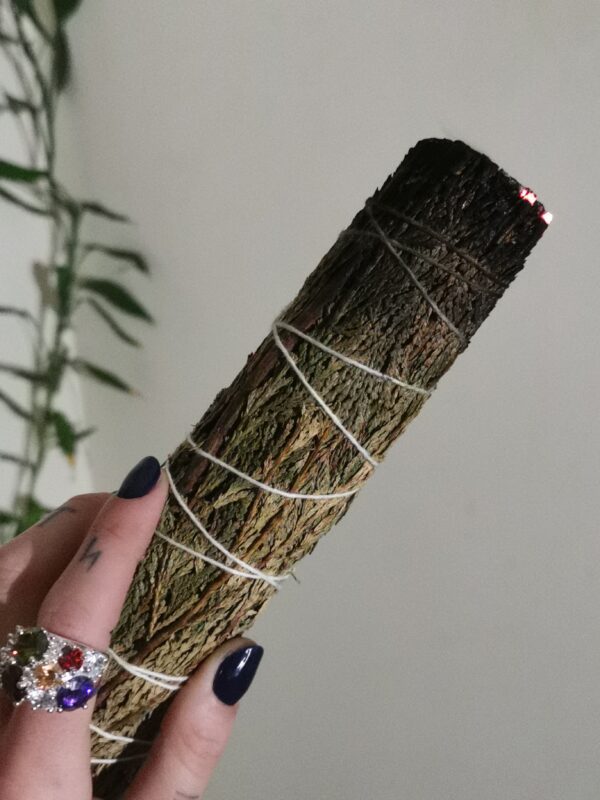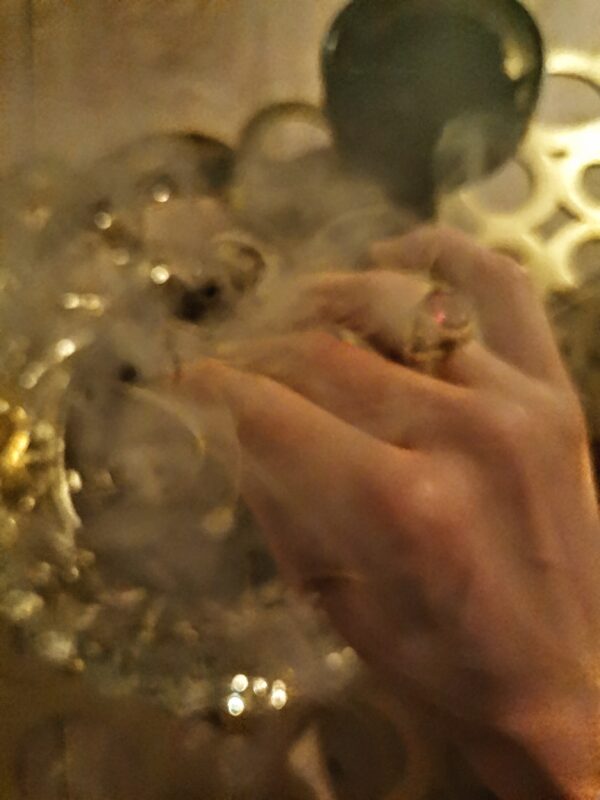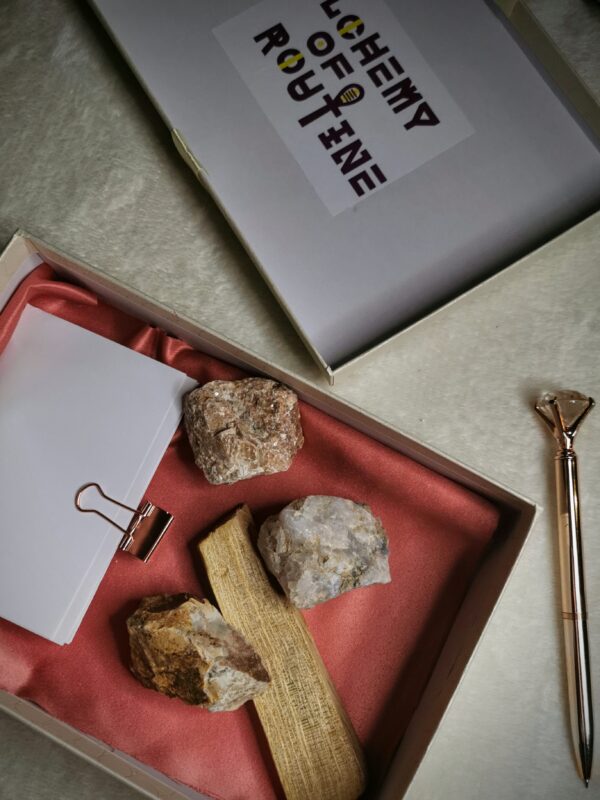Smudging, an ancient practice rooted in various cultures, has transcended time to become a modern tool for wellness and spiritual cleansing. Our experience explores the multifaceted world of smudging, exploring its historical significance, cultural stories, and contemporary benefits, especially focusing on materials like palo santo, rosemary, sage, and cedar.
Palo Santo: The Feminine Wood with Antibacterial Properties
Originating from the dry forests of South America, palo santo, also known as “holy wood,” is revered for its potent cleansing and healing properties. Traditionally used by indigenous tribes for spiritual purifying and energy cleansing, modern science now recognizes its antibacterial and anti-inflammatory qualities. The rich, sweet scent of palo santo is not just pleasing to the senses in a way that you are instantly seduced by that nectar of Gods, but also has the power to purify spaces, clear negative energies, and promote a sense of tranquility and grounding.
Rosemary and Sage: Staples in Smudging Rituals
Rosemary and sage have long been staples in the smudging rituals across cultures. Rosemary, with its sharp, invigorating aroma, is often used for protection and mental clarity. It’s believed to create an atmosphere conducive to healing and rejuvenation.
Sage, particularly white sage, is perhaps the most renowned smudging material. Native American tribes have used sage for centuries in their purification ceremonies. Its smoke is known to have the power to cleanse spaces of negativity, and recent studies suggest it can even purify the air of harmful bacteria.
Cedar: The Alchemy of Routine’s Favorite
Cedar smudging carries a special place in various traditions, including Native American rituals. Its rich, woody aroma is said to aid in deep spiritual grounding and purification. Cedar is often used in cleansing ceremonies, believed to attract good spirits and eliminate negative energies. Interestingly, cedar smudging is a favorite in the modern “Alchemy of Routine,” symbolizing strength, clarity, and inner peace.
The Cedar, Sage, and the King Solomon
Delving into historical texts and cultural stories, cedar and sage have been prominent. Intriguingly, among the many stories and myths surrounding King Solomon, one of the most fascinating involves the legendary cedar wood and its remarkable properties. King Solomon, renowned for his wisdom and the grandeur of his reign, is closely associated with cedar wood, particularly from the majestic cedar forests of Lebanon. These cedars were not only prized for their beauty and durability but also held a deeper, mystical significance.
One of the most compelling tales tells of how Solomon chose cedar wood for the construction of his famed temple and palace. The choice was not merely for aesthetic or structural reasons; it was deeply rooted in the belief in cedar’s divine protective qualities. According to legend, the cedar wood’s unique properties were thought to safeguard the temple against natural disasters, including fire. The wood’s resistance to decay and its reputed ability to repel fire were seen as symbolic of Solomon’s wisdom and his divine protection. This belief is encapsulated in the story that Solomon’s palace and temple, rich in cedar, were immune to destruction by fire, a testament to both the king’s wisdom and the wood’s extraordinary qualities.
In addition to its physical attributes, cedar wood was also revered for its spiritual significance. It was believed to be a symbol of strength, purity, and eternal life, qualities that were deeply resonant with Solomon’s spiritual and worldly pursuits. The use of cedar in sacred buildings was a physical manifestation of these beliefs, intertwining the material with spiritual symbolism.
The cedar of Lebanon holds a place of honor in various cultural myths and religious texts, often symbolizing righteousness, endurance, and spiritual elevation. In many ways, the cedar stories connected to King Solomon are not just about the physical attributes of the wood but also about the enduring wisdom and spiritual insights of the king himself. These stories transcend mere historical accounts, offering a glimpse into the rich tapestry of symbolism and belief that has surrounded cedar wood for millennia.
Raising Consciousness with Smudging
Contemporary research and spiritual teachings suggest that the practice of smudging can play a role in raising consciousness. The act of smudging, with its ritualistic elements, facilitate a connection to the spiritual realm, enhancing mindfulness and promoting a heightened state of awareness. The smoke from sacred herbs like sage, cedar, and palo santo is thought to carry prayers and intentions to the divine, aiding in spiritual elevation.
Air Element and Smudging
In many traditions, smudging is closely associated with the air element. The smoke’s ascent is seen as a symbol of the soul’s journey towards the heavens. Air, representing intellect and communication, is believed to be purified and energized through smudging, facilitating clearer thinking and effective communication.
Cleansing Crystals with Smudging: A Synergy of Energies
When we speak about spiritual practices and tools of Vibrational Medicine, smudging and crystal healing are often intertwined. This chapter delves into the fascinating process of using smudging as a method for cleansing and re-energizing crystals, a practice that combines the purifying properties of sacred smoke with the metaphysical energies of crystals.
The Significance of Crystal Cleansing
Crystals, revered for their healing properties and ability to hold and emit energy, are a cornerstone of many spiritual and holistic practices. Over time, these crystals can accumulate negative energies or become energetically dull. This is where the ancient art of smudging offers a solution. The ritualistic burning of sacred herbs and woods not only cleanses the environment but can also be directed to purify and re-energize crystals.
Smudging for Crystal Cleansing
The process of cleansing crystals with smudge smoke is both simple and profound. Typically, herbs such as sage, cedar, or palo santo are used. Each of these herbs carries its own unique energy and properties, which can complement the intrinsic properties of different crystals.
- Preparing the Space: For your alchemy of routine, you have to be aware that your living space is an important creation and way of communication with the Universe on so many levels. Arrange it as a sacred temple every day. Small gestures make the difference. Invite celebration of your daily routine, and it will be so.
- Lighting the Smudge Stick: Light the tip of your smudge stick, allowing it to catch fire and then gently blow out the flame, letting the herbs smolder and release their smoke.
- Setting Intentions: Before you start the cleansing process, hold the intention of purification and healing in your mind. This intention is a vital component of the cleansing process, guiding the energy and purpose of the ritual.
- Smudging the Crystals: Hold the crystal in the smoke or pass it through the smudge smoke gently. As the smoke envelops the crystal, envision it carrying away any negative energy and restoring the crystal’s natural vibrancy and power.
- Completing the Ritual: Once you feel the cleansing is complete, express gratitude for the cleansing and restoration of your crystals. Extinguish the smudge stick safely.
Choosing the Right Herb
– Sage: Known for its powerful cleansing properties, sage is ideal for removing negativity and is often used for purer, more potent energetic cleansing. Just be aware that white sage is a strong cleanser, sacred herb connected to our crown chakra, and before energy transforms from one form to another – healthier, from the Source, it will rise first. So you can see your own emotional clouds, recognize them so that they can dissolve further. That process requires your attention so you don’t get stuck in the loop of painful moments and patterns that don’t serve your highest potential.
– Cedar: Revered for its grounding and protective qualities, cedar can be used to cleanse crystals that are used for grounding and stability. Cedar is focus and direction. Cedar is desert and ethereal journey of ages-old truth to the secrets of divine wisdom and bridge between those two worlds that are actually one. But, as always, we need tools to build. And some are sent from the stars, but all begin underground.
– Palo Santo: With its sweet, uplifting scent, palo santo is excellent for cleansing crystals associated with spiritual elevation and emotional healing. Palo santo is the fatal feminine touch of your purest and wildest nature. The biggest alchemist is She.
Integrating Smudging and Crystal Practices
Incorporating smudging into your crystal cleansing routine not only cleanses the physical and energetic aspects of the crystals but also enhances your connection with them. This practice creates a harmonious synergy between the elements of earth (crystals) and air (smoke), fostering a deeper understanding and respect for the natural world and its interconnected energies.
In conclusion, the art of smudging offers a powerful, sensory-rich method for cleansing and re-energizing crystals. It’s a practice that honors ancient traditions while providing tangible benefits in the realms of spiritual and emotional well-being. By embracing this practice, we engage in a timeless ritual that deepens our connection to the earth, the air, the fire and the ether, beside the subtle energies that flow through all things.





Быстрое обучение и получение диплома магистра – возможно ли это?